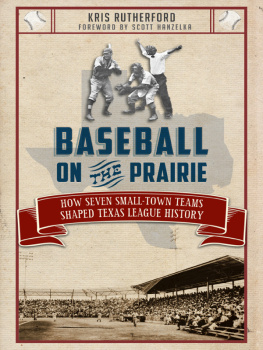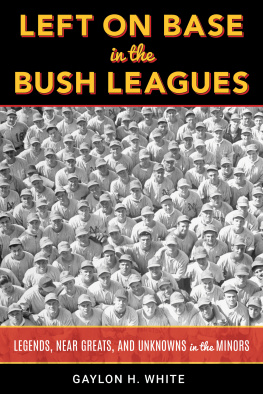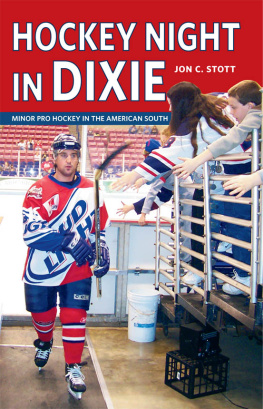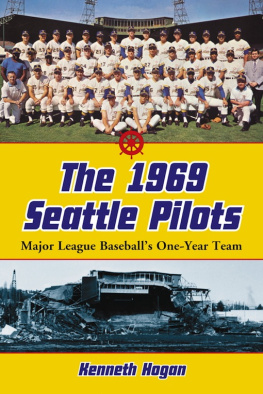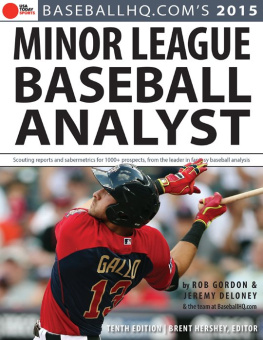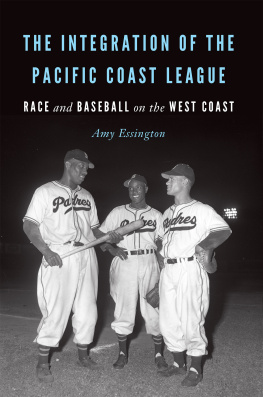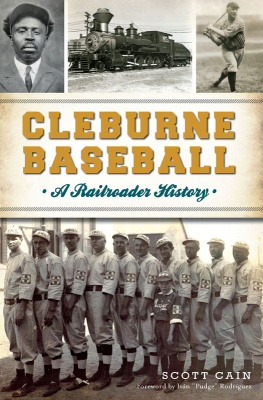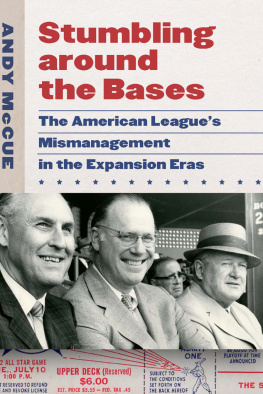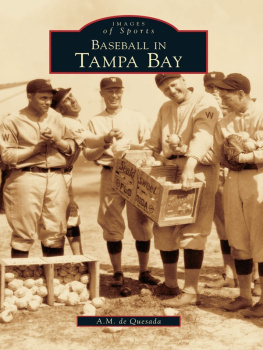
Published by The History Press
Charleston, SC 29403
www.historypress.net
Copyright 2014 by Kris Rutherford
All rights reserved
First published 2014
e-book edition 2014
ISBN 978.1.62584.739.3
Library of Congress CIP data applied for.
print edition ISBN 978.1.60949.935.8
Notice: The information in this book is true and complete to the best of our knowledge. It is offered without guarantee on the part of the author or The History Press. The author and The History Press disclaim all liability in connection with the use of this book.
All rights reserved. No part of this book may be reproduced or transmitted in any form whatsoever without prior written permission from the publisher except in the case of brief quotations embodied in critical articles and reviews.
To Mom and Dad, for whom small-town North Texas will always be home.
CONTENTS
FOREWORD
The Texas League has a long and storied history, sparking my interest in both the league and the sport of baseball in general. I have been researching the Texas League for over thirty years and have had the great fortune of assisting in editing the Texas League Media Guide and Record Book for the past twenty. During this time, I have read many fine books on the Texas League to aid in my research, but the one area not well documented is the smaller cities of the early league. If not for growing cities such as Sherman, Denison, Paris, Corsicana, Texarkana and Cleburne, the league may have not survived the late 1890s and early 1900s.
The Texas League began as Texas was growing in population and becoming stronger economically due to ranching and the discovery of oil. The lure of riches led the railroad industry in expanding, and Texas communities soon realized the railroad offered opportunities for growth in business and population.
Cities such as Sherman, Denison and Paris began looking for ways to prove they had arrived as up-and-coming commercial centers. One way to do so was to attract a professional baseball team in the fledgling Texas League. These communities saw the Texas League as a way to prove to their citizens that they were ready to compete with the larger cities of Dallas, Fort Worth, Galveston and San Antonio. The Texas League saw the smaller cities as bridges between the northern and southern divisions of the league. The railroads also saw this opportunity and often worked out deals for player transport. In many cases, they provided land for a teams ballpark. It is interesting to note that parks were often located at the end of a rail line or near a prominent stop.
The combination of these factors creates an interesting part of Texas League history. The smaller cities, much like their larger counterparts, had their ups and downs, ranging from the 1897 Paris Texas Midlands 41-80 record and the 1902 Corsicana Oil City Indians 87-23 season. Kris Rutherford skillfully blends the historical aspects of each community with the history of the early Texas League, making what follows an interesting read for history and baseball fans alike.
Scott Hanzelka
ACKNOWLEDGEMENTS
This book could not have been completed without the assistance of several individuals and organizations. First and foremost, I thank my traveling companion, photographer and wife, Karen, for her patience throughout this process, as well as my research assistant and youngest son, Kolton. Early Texas League history is interesting. In one day, we might have found ourselves in the library of Austin College in Sherman, along the abandoned tracks of the Texas and Pacific Railroad and wandering around what is left of Grayson Countys tiny community of Tom Bean. Our searches of North Texas cemeteries, many lost in the brush along narrow dirt roads, for the graves of forgotten Texas Leaguers was a fascinating experience, as was our quest to discover the sites of ballparks often abandoned for a century.
I also thank Texas League president Tom Kayser for his advice and direction. The Lamar County Historical Society, the Grayson County Historical Society and Sherman Museum, the Ennis Railroad and Cultural Museum, the Ennis Chamber of Commerce and the Clara Foster Slough Museum in Enloe all provided additional assistance. Likewise, Bobby Young and the Navarro County Historical Society, Mary Ann Hicks, Butch Garrison, the University of North Texas, AntiqueMystique.com, Greenville Revisited, Grayson County GenWeb, the Bell County historical website (txbell.net), Save Old Cleburne, Ron Maxfield, Robin Johnson and numerous anonymous citizens throughout North Texas pointed me in the right direction when needed.
I wish to give special thanks to Fred Finlayson and Mary Ann Thebo Finlayson of Idaho Falls, Idaho, and the late Guy S. Rall III of Houston, Texas, for their invaluable assistance in obtaining family history related to their ancestors who participated in the early Texas League. Mrs. Thebos uncle, Tony, initially piqued my interest in the subject, and without her assistance, this book would have focused far more on box scores than old-time baseballs most important legacythe personalities who made the game.
Finally, I offer an enormous debt of gratitude to Texas League aficionado Scott Hanzelka. This book would not have been possible without Scotts tenacious and meticulous research of early Texas newspapers in search of box scores, game descriptions, statistics and chronological information. His research is used annually in developing the Texas League Media Guide, and I know of no greater authority on the leagues early history. Scott offered advice and information throughout the course of my research, available to seek out even the most minute detail upon request.
PROLOGUE
Tony Thebo is perhaps Pariss most unheralded ballplayer. George, Tonys father, introduced the young Texas city to baseball soon after the Civil War. When the younger Thebo grew into a teenager, he wowed the hometown crowd as an amateur ballplayer. Mentored by fellow Parisian Ben Shelton, Tony became the fastest base runner in Paris. A hawk in the outfield, Tony turned sure extra-base hits into routine fly balls and gunned down would-be runs at the plate from seemingly anywhere on the field. He never forgot his roots or the people who helped him enjoy a long minor-league career.
George Thebo encouraged Tony to learn the game of baseball, and without his enthusiasm, Tony would probably never have graced a baseball diamond. Tonys mother expressed unquestioned disgust at baseball and ballplayers in general, but George offered his son silent encouragement in the face of his wifes disapproval. In 1900, when Tony and his younger brother Willie watched their fathers casket lowered into a grave in Pariss Evergreen Cemetery, Tony recalled his support as he prepared for his professional career.
Throughout Tonys career, he saw a few Texas League colleagues meet untimely deaths. Teammate and league pioneer Big Mike OConnor succumbed to tuberculosis before the 1906 season, his death shocking the entire league. After players and executives from across the state gathered in Austin in his honor, some may have forgotten Big Mikes contribution to the Texas League, a baseball circuit that may not have survived the 1890s without his support. Six years later, when former teammate Rube Taylor took a fateful step in front of a Dallas streetcar, few recalled the one-time major leaguers ties to Texas League baseball. Still, Tony remembered both of the old ballplayers contributions.

Karen Rutherford photo
Next page
